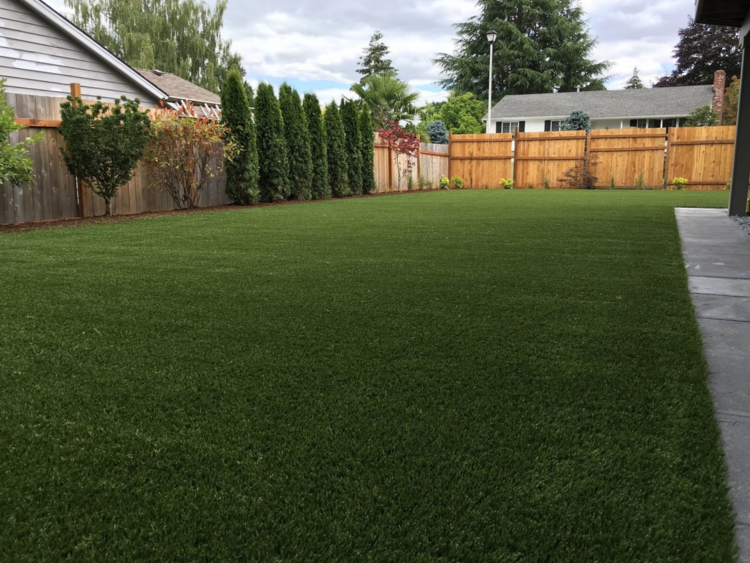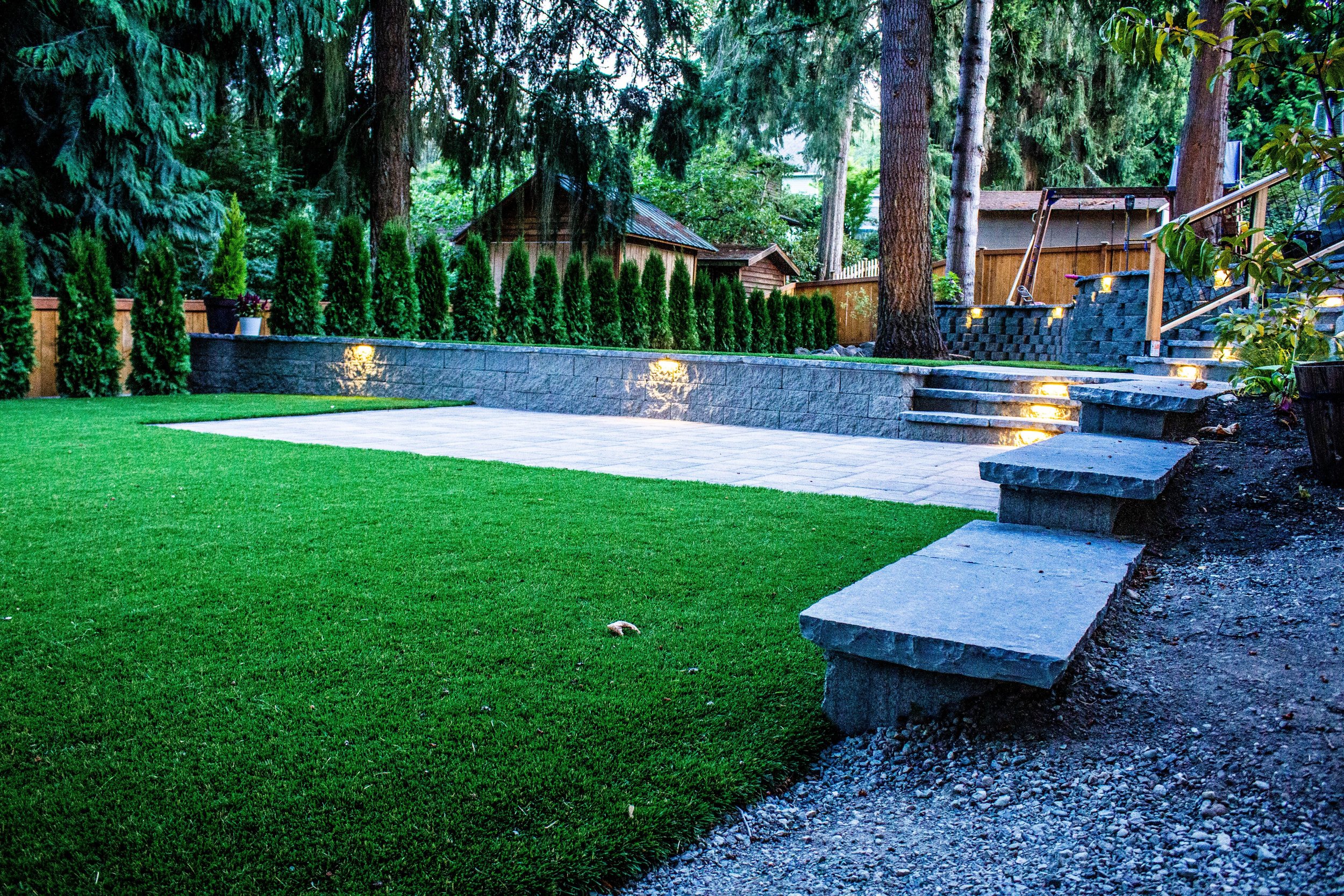Dependable Artificial Turf Companies Phoenix for a Beautiful and Evergreen Lawn
Dependable Artificial Turf Companies Phoenix for a Beautiful and Evergreen Lawn
Blog Article
Delve Into the Environmental Conveniences of Opting for Artificial Turf Solutions
The fostering of synthetic grass services presents an engaging opportunity to address pressing environmental difficulties. By dramatically minimizing water usage and reducing the application of damaging chemicals, these choices not only promote lasting landscape design yet additionally secure local ecological communities. The lower carbon footprint connected with decreased upkeep tasks contributes to an extra sustainable method to land monitoring. The implications of these advantages prolong beyond mere conservation initiatives, elevating inquiries concerning their lasting effect on environment conservation and total environmental equilibrium. Exploring these measurements reveals a complex interaction worth thinking about.
Water Conservation Benefits
One of one of the most substantial advantages of artificial grass is its capability to preserve water. Standard grass yards need considerable irrigation, particularly in areas susceptible to dry spell or water limitations. In comparison, man-made lawn does not require watering, considerably reducing the total demand for water sources. This function is specifically advantageous in arid areas where water deficiency is a pressing problem.
By getting rid of the demand for regular watering, fabricated grass adds to sustainable landscape practices and aids mitigate the ecological impact of too much water consumption. The preservation of water prolongs to the decrease of drainage, which can lead to soil disintegration and waterway air pollution.
In addition, the setup of synthetic grass permits communities and house owners to allot water resources extra successfully, concentrating on crucial uses such as drinking water and farming. The shift in the direction of fabricated grass not just advertises accountable water usage however likewise lines up with more comprehensive ecological objectives intended at preserving natural deposits.
As areas progressively prioritize sustainability, the water conservation advantages of synthetic turf present a compelling case for its fostering in commercial and domestic landscaping tasks.
Decreased Chemical Usage
The change to synthetic grass considerably reduces the reliance on chemical treatments generally utilized in natural lawn maintenance. Typical turf monitoring normally includes the application of herbicides, plant foods, and chemicals to advertise growth and control bugs. These chemicals can position risks to human health and wellness, local wild animals, and the setting, adding to dirt and water contamination.
On the other hand, man-made turf eliminates the demand for these dangerous compounds. Once mounted, it requires minimal upkeep, mostly being composed of regular cleansing and occasional infill replenishment. This reduction in chemical usage not only benefits the prompt setting but likewise adds to wider ecological stability. By minimizing the release of artificial substances into the ecosystem, synthetic grass advertises healthier soil and water systems.
Additionally, the lack of chemical overflow connected with man-made lawn installations aids secure local waterways from air pollution, supporting marine life and keeping biodiversity. Turf installation phoenix az. As communities progressively focus on sustainable techniques, going with fabricated lawn offers a feasible option that aligns with environmental preservation goals. Through this change, homeowner can enjoy rich eco-friendly areas without compromising ecological wellness, paving the way for a more lasting future
Reduced Carbon Impact

Furthermore, the installation of artificial grass can result in considerable water conservation. Natural yards need considerable amounts of water for watering, which not only adds to the carbon footprint related to water removal and treatment yet also strains local water resources. On the other hand, man-made turf needs marginal upkeep, calling for no watering, thus substantially reducing water usage and its linked energy prices.
Furthermore, the durability of synthetic grass adds to its lower carbon influence. With a life-span of as much as 15 years or more, the demand for frequent substitutes is decreased, leading to less waste and reduced energy consumption in manufacturing and throwing away standard grass options. Overall, man-made lawn provides a lasting alternative for environmentally mindful landscaping.
Habitat Preservation
Habitat preservation is an important factor to consider in the discussion over landscape design choices, specifically when comparing synthetic grass to all-natural turf. Natural yard yards frequently require substantial maintenance, including using herbicides, plant foods, and chemicals, which can detrimentally affect local ecological communities. These chemicals can leach into the soil and rivers, damaging native plants and animals and interrupting regional habitats.
On the other hand, synthetic grass provides a chance to lower the environmental impact of landscape design. By choosing artificial turf, homeowners can minimize the interruption of all-natural environments connected with traditional grass care methods. Man-made grass gets rid of the requirement for damaging chemicals, thus protecting nearby wildlife and maintaining the integrity of bordering environments. Furthermore, the installment of synthetic grass can lead to the conversion of previous lawn locations into even more biodiverse landscapes, such as pollinator gardens or native plant areas, which can sustain regional wild animals.
Ultimately, the transition to synthetic grass not just saves water and lowers upkeep initiatives however likewise cultivates a more read the article harmonious relationship in between human tasks and the natural surroundings, advertising environment preservation at the same time.
Long-Term Sustainability
Lasting sustainability is a critical consider examining the advantages of man-made grass over traditional yard lawns. Among one of the most substantial benefits of synthetic turf is its resilience; it can last up to 15-20 years with marginal maintenance, whereas all-natural turf calls for frequent reseeding and replacement. This long life reduces the requirement for constant sources, such as water, fertilizers, and pesticides, which are essential for preserving a healthy and balanced yard lawn.
In addition, fabricated grass adds to a decrease in carbon discharges connected with yard care devices. Traditional yards usually require gas-powered lawn mowers, trimmers, and blowers, all of which add to air contamination. Artificial turf companies phoenix. In contrast, artificial grass gets rid of the requirement for such devices, advertising a cleaner environment
In addition, the production of synthetic grass increasingly uses recycled products, improving its sustainability account. As makers adopt environment-friendly methods, the environmental footprint of synthetic grass continues to diminish.

Verdict
The fostering of fabricated lawn solutions presents substantial ecological advantages, including considerable water conservation, minimized dependence on dangerous chemicals, and a reduced carbon impact. Synthetic grass help in maintaining natural habitats by lessening land disturbance and advertising long-term sustainability with the use of sturdy products. Jointly, these elements highlight the possibility of fabricated turf to contribute positively to ecological health and supply a practical option to typical landscaping techniques in a significantly resource-conscious globe.
In contrast, artificial turf does not require watering, useful site substantially reducing the general need for water resources. By decreasing the launch of synthetic compounds right into the ecological community, fabricated lawn promotes much healthier dirt and water systems.
Moreover, the installment of fabricated grass can result in substantial water conservation. In contrast, synthetic turf needs marginal upkeep, requiring no watering, thus considerably lowering water use and its connected energy prices.

Report this page